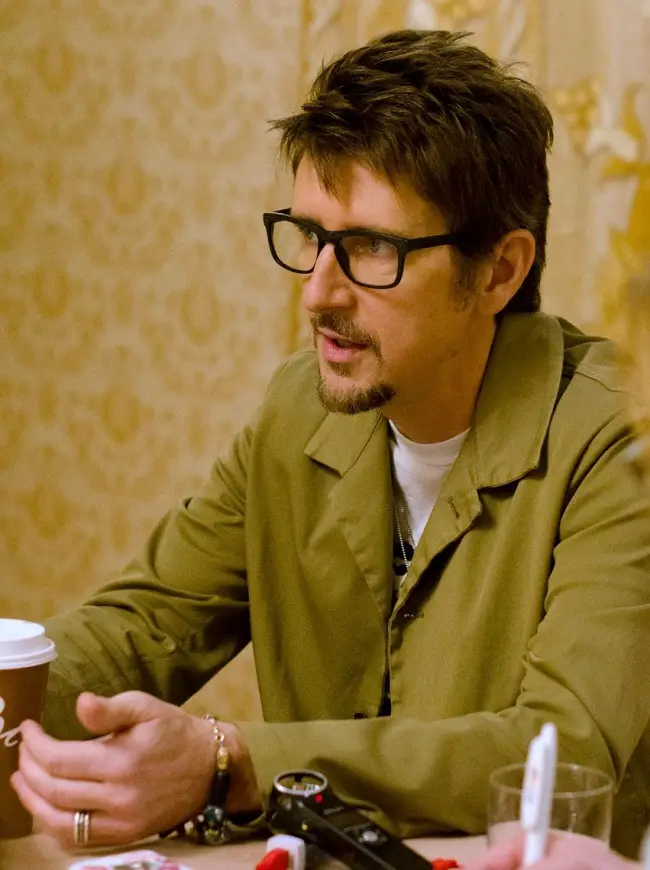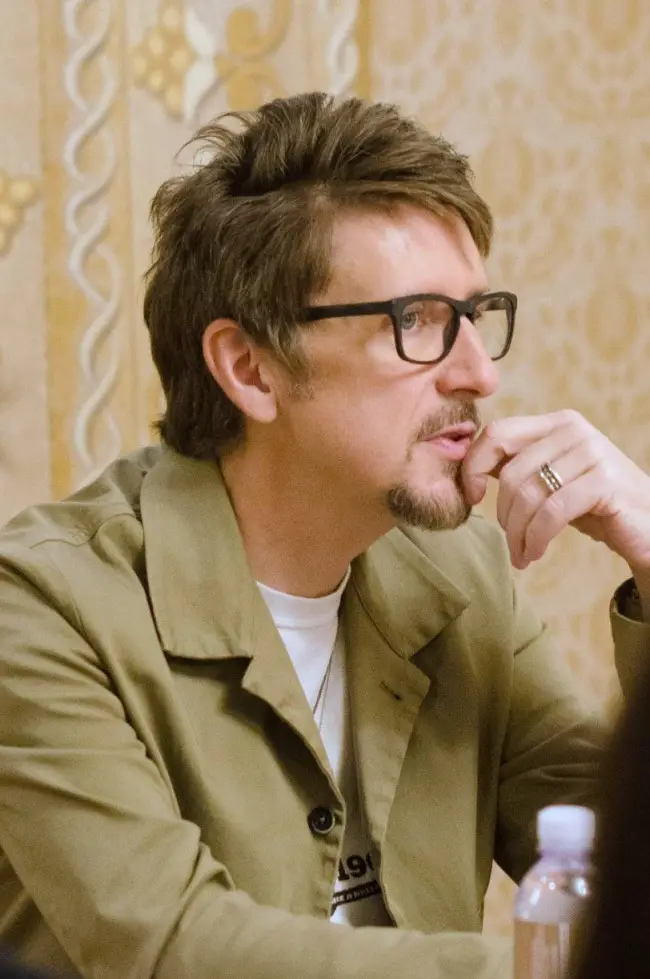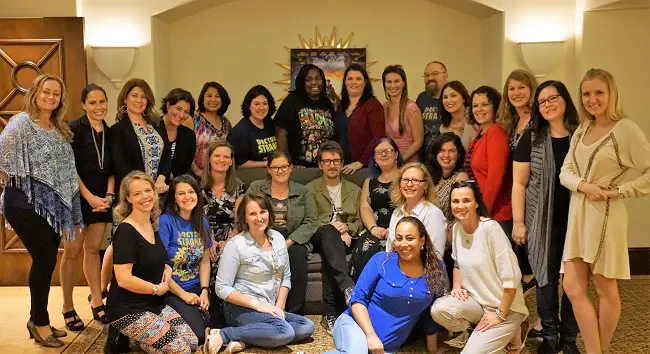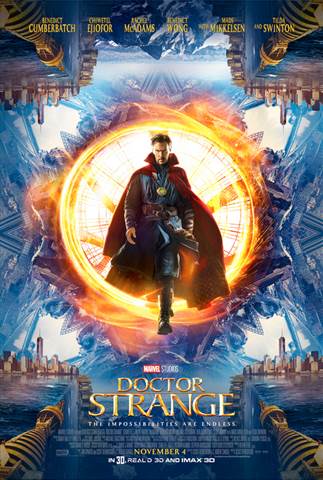The newest Marvel movie – Doctor Strange – is written and directed by Scott Derrickson. During my press trip for the film I had the opportunity to sit down and chat with him. I learned about some of the most important aspects of the movie, from the underlying message to how Scott used the groovy 60’s for his writing inspiration. Find out more about Scott and the Doctor Strange film below!
Scott Derrickson Interview
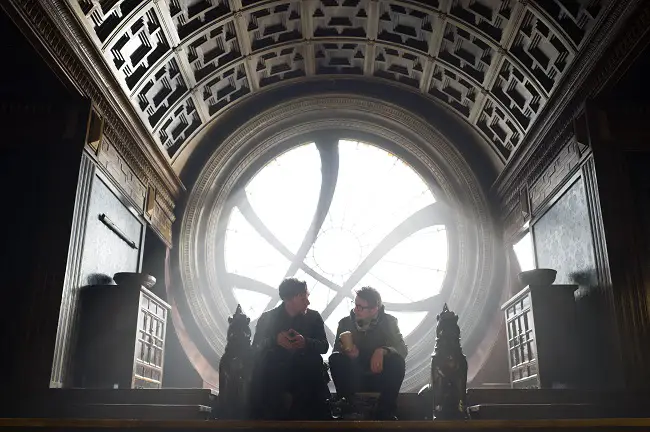
Marvel’s DOCTOR STRANGE L to R: Benedict Cumberbatch (Doctor Strange) and Director Scott Derrickson on set. Photo Credit: Jay Maidment ©2016 Marvel. All Rights Reserved.
Q: Speaking about about special effects, can you tell us just how much work went into that?
Scott Derrickson: A lot. The visual effects took a long time developing them. It was one of the most creative parts of the whole process because the idea going into it was to use visual effects for a new reason than what you usually get in big event movies. In big event movies, even in Marvel movies, special effects are usually used to destroy things. It’s about destroying cities, destroying – because that’s what creates screen stimulus. And I just felt committed to the idea of using those big expensive visual effects for something else, something new, something more interesting, and specifically, something trippy, and weird. And to give the audience an unexpected experience.
Q: Is there any time that you guys thought about trying to update that, something for the modern audience? Or was there always this kind of throwback to the ’60s?
SD: Well, the ’60s comics were the primary influence for the movie, for sure. Those early Stan Lee, Steve Ditko comics, which were very much products of the ’60s, and the ’60s psychedelia, the weird imagery of the movie is so rooted in the Steve Ditko artwork from that era. I listened to almost nothing but psychedelic rock from that era, while I was working on this screenplay. I mean that’s really why there’s one Pink Floyd track in there that’s from the first Pink Floyd album, back in their early psychedelic days.
What I wanted to do was to not make a throwback movie, or a nostalgic movie. I didn’t want to try to go back and recapture the ’60s revolution feel, but I wanted to have that same mindset of open your mind, expand your mind, see things new. You know, look at a new aesthetic and, explore possibilities. So, that was the goal, was to take that ’60s mentality, and then bring it into a modern superhero movie, and do it with a character who was about something, hopefully meaningful.
Q: In talking to Tilda this morning, she said to ask you about your choice in choosing a woman for the Ancient one.
SD: That choice was twofold. The first reason was because I was trying to find ways, creative ways, and positive ways, to escape the racial stereotypes from the original comics. You know, they were products of the ’60s for good and bad, those comics. The Ancient One, and Wong, those two characters were pretty offensive racial stereotypes, by modern standards. Wong’s character, I was able to completely reinvent.
I sort of inverted his character. Everything about his character in the comics, I just flipped on its head. Instead of a man servant he’s a master of the mystic arts. Instead of a sidekick, he’s Strange’s intellectual mentor. You know, so that was great. With the Ancient One, I couldn’t really do that. The Ancient One for origin story to work…still had to be a magical, mystical, domineering, martial arts mentor, to Doctor Strange.
So the first thing I wanted to do is make it a woman. And I thought, okay, that’s fresh. I did that to get away from the cliché and the stereotype, but I also did that because I wanted a woman Tilda’s age. I wanted a woman who wasn’t the 26 year old, tightly leather clad, hot, fan boy dream girl. I wanted to have a real woman in the movie, in terms of trying to get diversity in there. I thought about casting an Asian woman. We had lots of discussion about that but I couldn’t get away from the stereotype of the Dragon Lady. If you know anything about American cinema, and the portrayal of the Dragon Lady….the anime movies and all that. So then I started thinking, well who could bring the ethereal, enigmatic, mystical qualities of the Ancient One, from the comics, that are good? And I was like, Tilda.
When I came up with the idea in my head about Tilda doing it, suddenly the role came to life, and I wrote it, without her knowing anything about the movie or knowing that I was interested in her doing it, I wrote it for her, and it was great.
More on the interview with Scott Derrickson below.
What was your thoughts behind that, it’s, just the powerful messages in the film?
Scott Derrickson: Well, I’ll answer the question this way….and I haven’t said this to anybody. My biggest personal motive for making the movie is that I have two boys who are now, 13 and 10. They’re Marvel fans, huge Marvel fans. And I wanted to make a movie that would surprise them, but also a movie that would leave an impression on them, of what I think are some of the most important things, you know, in life. That’s where a lot of that came from.
Q: The consensus of many fans is that this is a huge game changer for the Marvel cinematic universe. Did you have that feeling when you went into this project, and how did you see this affecting the MCU, going forward?
SD: I don’t know how it will affect the MCU, because that’s Kevin Feige’s. He’s the auteur of the MCU- he’s the captain of the ship, steering the ship. I’m friends with the Russos. I know what the stories of Infinity War are going to be, so I have some sense of it. But when I made this, and going in to get the job, I approached it as a fan. I’m a fan, first. I’m a comic book fan first, on this movie, and I’m a movie fan, before I’m a filmmaker.
About Doctor Strange
Marvel Studios’ “Doctor Strange” follows the story of world-famous neurosurgeon Dr. Stephen Strange who, in his quest for healing after a horrific car accident, discovers powerful magic in a mysterious place known as Kamar-Taj—the front line of a battle against unseen dark forces bent on destroying our reality.
See the trailer below and don’t forget Doctor Strange is in theaters everywhere November 4th!
Did you miss our interview with Benedict Cumberbatch and Rachel McAdams?
